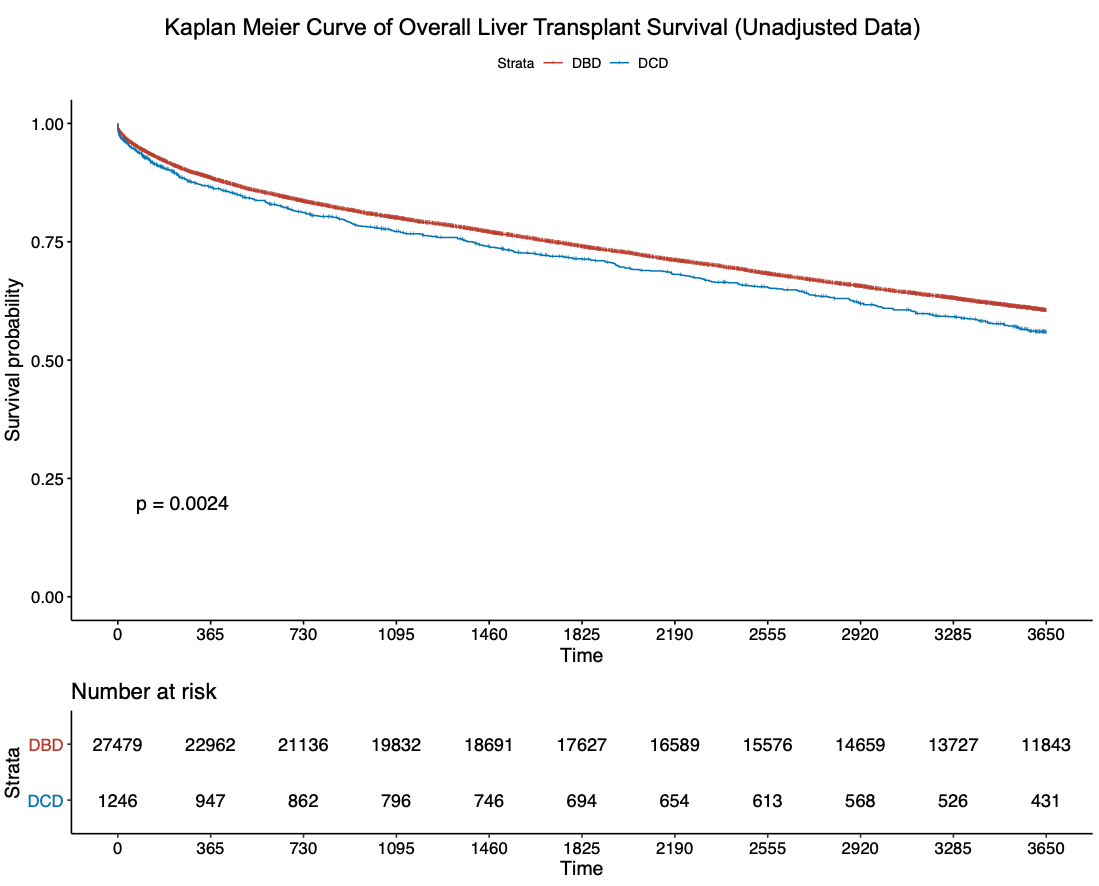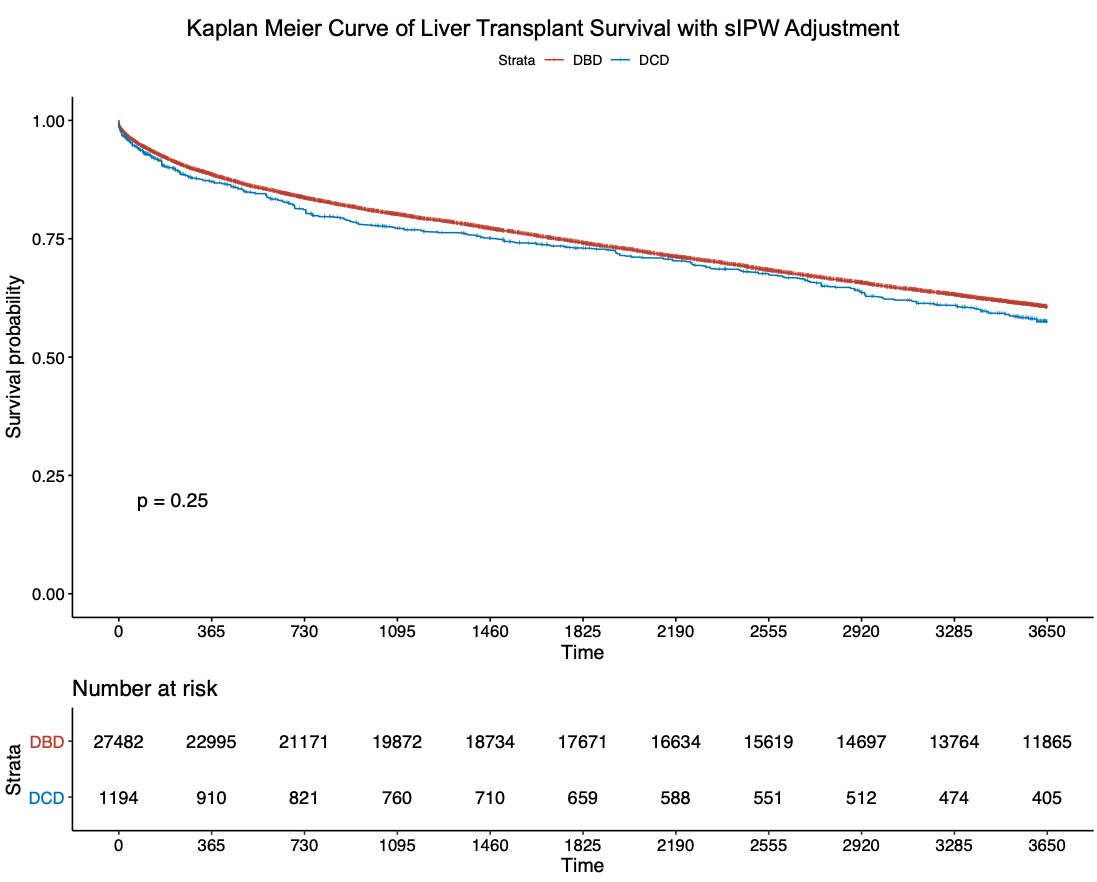Liver Transplant with Donation after Cardiac Death versus Donation after Brain Death Donors: Survival and Outcomes at 10 Years
1Surgery, Beth Israel Deaconess Medical Center, Boston, MA, 2Harvard Medical School, Boston, MA
Meeting: 2020 American Transplant Congress
Abstract number: 576
Keywords: Donors, marginal, Liver grafts, Liver transplantation, Survival
Session Information
Session Name: Liver: MELD, Allocation and Donor Issues (DCD/ECD) II
Session Type: Oral Abstract Session
Date: Saturday, May 30, 2020
Session Time: 3:15pm-4:45pm
 Presentation Time: 3:27pm-3:39pm
Presentation Time: 3:27pm-3:39pm
Location: Virtual
*Purpose: This observational study utilizes the SRTR database to assess liver transplant outcomes after Donation after Cardiac Death (DCD) versus Donation after Brain Death (DBD) liver transplantation over a 10-year follow-up period.
*Methods: SRTR data was used to identify adults who underwent a deceased donor first-time liver-only transplant between March 2002 and December 2008 to capture post-MELD score data with 10-year follow-up. We compared 27,482 DBD adult liver transplants with 1194 DCD liver transplants. A propensity score for donor type (DCD vs DBD) was estimated using logistic regression, and the association of donor type with 10-year overall survival was evaluated after adjustment using stabilized inverse probability of treatment weights (sIPW). Patients with greater than 10-year survival time, those lost to follow-up, and retransplants were censored.
*Results: Recipient international normalized ratio (INR), bilirubin, and creatinine (Cr) were comparable between the DBD and DCD liver recipient groups. Median INR was 1.6 for both DBD and DCD recipients, median serum Cr was 1.1 for both DBD and DCD recipients, and median total bilirubin was 3.4 for DBD, 3.6 for DCD, yielding an average MELD score of 17 in both groups. The unweighted overall survival for DBD liver recipients at 10 years was 60.5% (95% CI: 59.9%, 61.1%) versus 55.9% (95% CI: 52.9%, 59.1%) for DCD liver recipients (p = 0.0024)
However, after adjusting for donor age, sex, race, BMI, cause of death, medical history, ischemic time, recipient primary diagnosis, blood type, MELD score, and HCC exceptions, the overall survival for DBD liver recipients at 10 years was 60.6% (95% CI: 60.0%, 61.2%) versus 57.5% (95% CI: 54.4%, 60.8%) for DCD liver recipients (p = 0.25)
*Conclusions: There was no significant difference in patient survival between DCD and DBD livers at 10-year follow-up after adjusting for possible confounders. The overall 10-year survival rate of liver transplant remained constant at 60%, irrespective of DCD vs. DBD status. This national data supports more frequent use of DCD livers without risk of increased long term mortality, although with consideration for greater risk of biliary compromise.
To cite this abstract in AMA style:
Haque O, Roth E, Fleishman A, Khwaja K. Liver Transplant with Donation after Cardiac Death versus Donation after Brain Death Donors: Survival and Outcomes at 10 Years [abstract]. Am J Transplant. 2020; 20 (suppl 3). https://atcmeetingabstracts.com/abstract/liver-transplant-with-donation-after-cardiac-death-versus-donation-after-brain-death-donors-survival-and-outcomes-at-10-years/. Accessed December 16, 2025.« Back to 2020 American Transplant Congress


